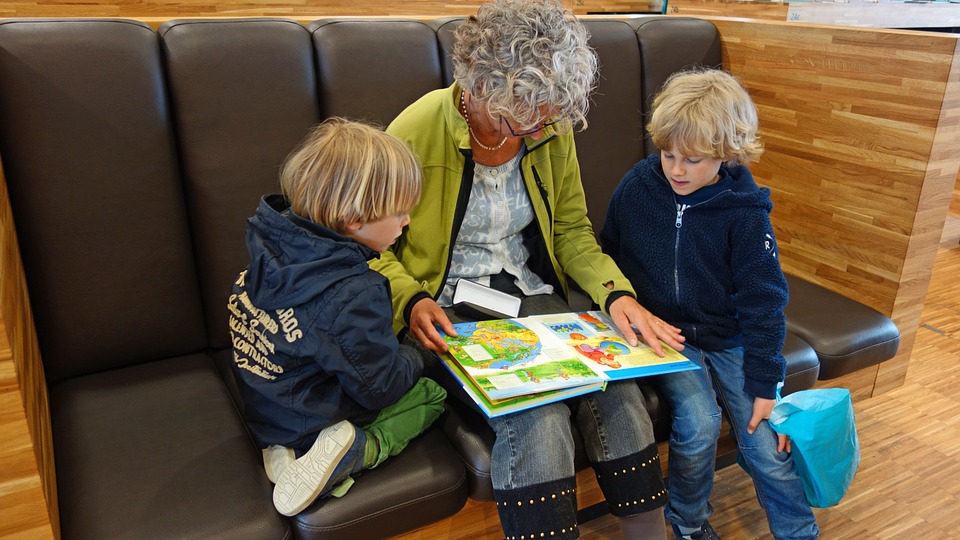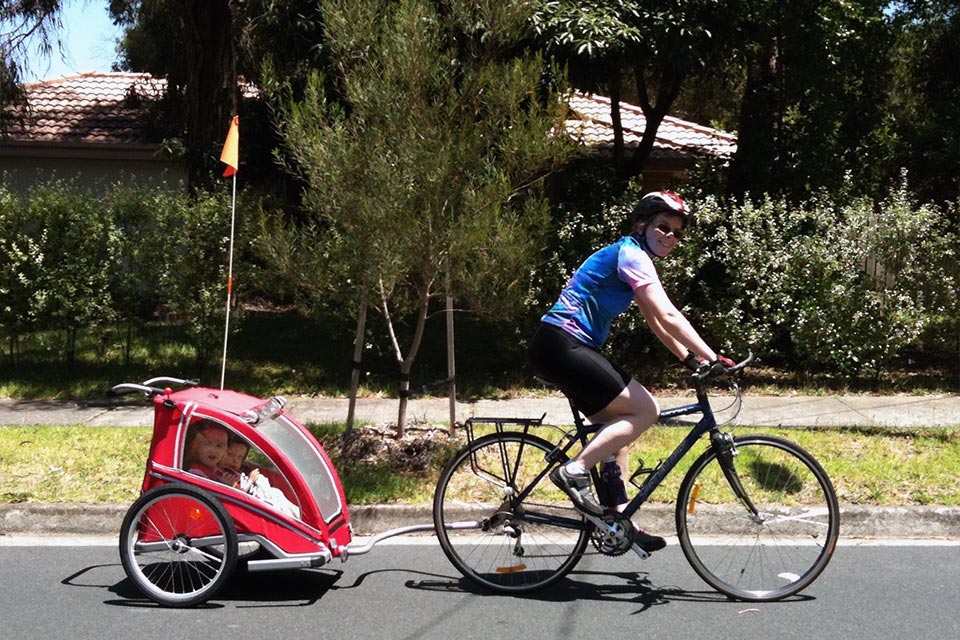8 Easy Hacks To Teach A Toddler How To Read
 Reading is a skill that is easy to take for granted. Most people might even believe that reading will come naturally, just like speaking.1 But, that is not the case. Reading is the result of being able to process letters, their sounds, and how they go together to create words. When you look at it like this, you start to see that learning how to read can be quite difficult. This is especially true if you are trying to teach your toddler how to read. Don’t worry. It is difficult. But, it is not impossible. Here are 8 easy hacks to teach a toddler how to read.
Reading is a skill that is easy to take for granted. Most people might even believe that reading will come naturally, just like speaking.1 But, that is not the case. Reading is the result of being able to process letters, their sounds, and how they go together to create words. When you look at it like this, you start to see that learning how to read can be quite difficult. This is especially true if you are trying to teach your toddler how to read. Don’t worry. It is difficult. But, it is not impossible. Here are 8 easy hacks to teach a toddler how to read.
8 Easy Hacks To Teach A Toddler How To Read
- Educate Yourself On Reading Skills
- Develop Phonemic Awareness With Nursery Rhymes
- Teach Phonics By Using Flash Cards
- Turn Your Home Into A Print-Rich Environment
- Introduce Sight Words & Play Sight Word Games
- Play With Letter Magnets To Teach Your Toddler How To Read
- Consider Using Educational Apps
- Take The Time To Read Together
Learning how to read can be quite difficult. But, when broken down into simple and straightforward steps, the process becomes a lot more achievable. This is why you should pay special attention to the first “hack” on this list. I am aware that some people might not consider this an actual hack. But, please bear with me. It will all make sense in the end.
1. Educate Yourself On Reading Skills
The first thing you need to do is to educate yourself on the core skills of toddler reading. This makes the whole process a lot easier for you since you’ll understand the process from your toddler’s point of view. Do not worry, there are only five core skills. So, this will not take you too long.
- Phonemic Awareness – This is your toddler’s ability to hear, identify, and manipulate individual sounds in spoken words.2 Before your toddler can learn to read, they first have to learn how the sounds in words work.
- Phonics – This is your toddler’s ability to correlate letters with their sounds.3 Phonics is an essential skill that will take some time to master. This is because your toddler has to fully understand the alphabet. Then, they have to fully understand all of the different sounds that each letter in the alphabet has.
- Vocabulary – This is your toddler’s ability to understand what words mean and when they should be used. This is a fundamental skill that is usually developed further with age.4
- Reading Comprehension – This is your toddler’s ability to process text and understand its meaning.5
- Fluency – This is your toddler’s ability to read with speed, accuracy, and proper expression. To understand what they read, they must be able to read fluently whether they are reading aloud or silently.6
By breaking reading down into these five skills, you find it a lot easier to reach your goal of teaching your toddler how to read. I told you it will all make sense in the end.
2. Develop Phonemic Awareness With Nursery Rhymes
Before your toddler can read, they first have to develop phonemic awareness. You can do this by singing nursery rhymes with your toddler. Besides being a lot of fun, they also are instrumental in developing phonemic awareness7. By singing along and playing with rhymes, your child starts to listen to the sounds that make up the words. For example, the “ing” sound in the word ring is the same “ing” sound in ding, king, wing, and sing.
A good way to have fun and still develop phonemic awareness is by exaggerating the sounds while singing nursery rhymes. Try to put extra emphasis on the different sounds in the words. For example, when singing Hickory Dickory Dock, put extra emphasis on “dock” and “clock.” You might even try to add additional rhyming words once the song is over. Your child might think you’re just being silly. But, I guarantee that they will play along and try to find more words that rhyme. By doing so, your toddler is one step closer to learning how to read.
3. Teach Phonics By Using Flash Cards
Once your toddler has a strong grasp of phonemic awareness, you can start to focus on phonics. An effective way to do this is with the use of flashcards. Get yourself some flashcards and write a different letter of the alphabet on each one. Then take time out of every day to review them with your toddler. Remember that this is a process. And, the process might take a while to complete. So, do not be in a rush to get it done. Just enjoy the process.
Quiz your toddler by presenting a random letter and ask them what letter it is. Provide positive reinforcement if they get it right. Then put it down in one stack. If they get it wrong, tell them what letter it is and put it in a different stack. You can try to go over the stack of wrong answers one more time after you complete the entire alphabet. But, I wouldn’t pursue it more than that since it might become overwhelming for your toddler. Do, this every day until your child knows every letter in the alphabet.
Once they do, you can begin to ask them what each letter sounds like. Then follow the same methodology you used when teaching them the alphabet. Do this consistently every day. And, your child will eventually know every letter in the alphabet and what they sound like.
4. Turn Your Home Into A Print-Rich Environment
While you’re teaching your toddler phonics, take the time to turn your home into a print-rich environment. A print-rich environment is one in which “children interact with many forms of print, including signs, labeled centers, wall stories, word displays, labeled murals, bulletin boards, charts, poems, and other printed materials.”8
By observing printed words (on signs, labels, posters, etc.) in everything they interact with, your toddler will realize that words carry meaning. They will want to explore the words and this will motivate them to try to read and write.
You can encourage them by taking the time to sound out the words. Then challenge them to do it themselves. Ask them questions like “What letter is this?” “What does the letter sound like?” “What other words have that same sound?”

5. Introduce Sight Words & Play Sight Word Games
At this point, you can start to introduce your toddler to sight words and play sight word games with them. Sight words are words like come, does, or who. These words have to be memorized because decoding them is difficult. So, your toddler should memorize sight words as a whole (by sight) so that they can recognize them immediately.9
To make this fun, you can try playing some sight word games with your toddler. Focus on playing games that challenge your toddler to listen, identify and manipulate the sounds in the words. Just remember to keep it fun for your toddler. Who said learning has to be boring?
6. Play With Letter Magnets To Teach Your Toddler How To Read
You might remember that I previously wrote about baby magnets. Well, here is a perfect opportunity to use them. Grab a set of letter magnets and sit in front of your fridge with your toddler. Put all of the consonants on one side of the fridge and the vowels on the other site. Then play spelling games with them.
You can start with CVC (consonant-vowel-consonant) words since they are short and easy. Ask your toddler to spell the word “bat.” Then ask them to sound it out loud. You can assist them at first by sounding it out with them (/ba/, /ah/, /ta/). Then ask them to find the letter that represents each sound. Then finally, ask them to assemble the word.
This is a quick word game that you can play every time your toddler passes by the fridge.
7. Consider Using Educational Apps
I’ll admit that these “hacks” are pretty time consuming so far. So, here’s a one that makes it easier for you… consider using educational apps. You might want to check out the list I made of some of the best educational apps for toddlers and preschoolers.
Educational apps have come a long way. Some of them are like virtual classrooms with award-winning educational activities, books, songs, and games for toddlers, preschoolers, and kindergarteners. The companies that make these apps have taken a lot of time to come up with the most effective ways to teach on a touch screen. So, you can use educational apps as a guilt-free way for your toddler to get screen time since they are still learning.
8. Take The Time To Read Together
And last (but not least), take the time to read together with your toddler. You might not realize that your child learns a lot by mimicking you. They will observe how you sound out the words. And, their vocabulary will grow since they are being exposed to new words while your reading.
You can take it a step further by asking them questions while your reading with them. Ask them to sound out words that “you don’t know” or look for words that start with a certain sound. This makes reading with your toddler a more interactive experience. And, keeping your child involved will only strengthen your child’s reading skills.
Finally, taking the time to read with your toddler will instill a love for reading in them.
Remember To Make Reading Enjoyable!
Remember, teaching your child to read is going to be a process. Your child might take to it like a duck to water. Or, your child might struggle. Either way, remember to make reading enjoyable. Trying mixing it up now and then. Introduce different word games to keep it exciting. Go book shopping with your toddler and let them pick out their book. Think of different ways that you can teach your toddler to read during your day. Doing so will keep your toddler motivated. And, a motivated toddler will learn to read in no time.
 By Grace – Child Development Associate Teacher in California
By Grace – Child Development Associate Teacher in California
My husband Mark and I have been blessed with two beautiful, smart, positive (I can go on and on) girls… Kenzie & Kayla. And, we have learned many tips and tricks while raising them. Tips and tricks that we felt would be useful to other new parents out there. So, we started WAYISAVE as a website built by parents for parents to share the best baby deals, coupons, tips, tricks and the occasional piece of advice.
- readingrockets.org | speaking is natural; reading and writing are not
- begintoread.com | phonemic awareness
- k12reader.com | what is phonics
- wikipedia.org | vocabulary
- wikipedia.org | reading comprehension
- readingrockets.org | fluency
- resourcesforearlylearning.org | having fun with phonemic awareness
- childcarequarterly.com | literacy: creating a print-rich environment
- weareteachers.com | what are sight words





